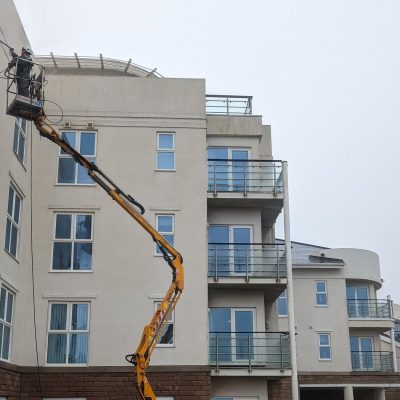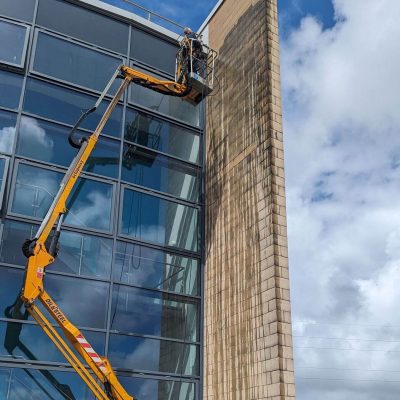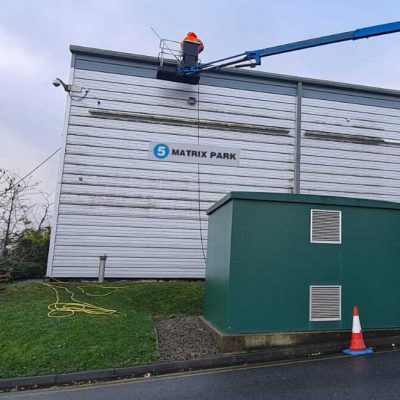Working with mobile elevating work platforms (MEWPs) offers many advantages for accessing height safely. However, if proper load handling procedures are not followed then one can end up with accidents and injuries.
In this blog post, we’ll provide a comprehensive guide to handling loads safely when working with MEWPs.
Understanding Load Capacities
All MEWPs have a maximum safe working load (SWL) or capacity rating specified by the manufacturer. This load limit mustn’t be exceeded to prevent instability or collapse.
The load capacity may vary depending on the model of MEWP, as well as the configuration – whether the platform is extended or retracted, elevated or lowered. Operators should check the load chart for the specific machine to determine permitted load at different positions.
As a general rule, smaller, more compact machines like scissor lifts have lower capacities than larger articulated or telescopic boom lifts. Exceeding the SWL puts tremendous stress on the machine’s components and can cause catastrophic failures.
Pre-Lift Checks
Thorough pre-lift checks should be carried out before any load is introduced to the platform.
Make sure that the MEWP is situated on firm, level ground that can support the combined weight of the –
- Machine,
- load, and
- Occupants.
Inspect the entire machine for any defects or damage that could impact stability. Check:
- Tires,
- Outriggers,
- Hydraulics, and all other components.
Ensure all maintenance is up-to-date. And tire pressures match the manufacturer’s specifications.
Analyse the load weight and dimensions to confirm it is within the MEWP’s ratings for that particular configuration. Remove any loose items from the platform that are not essential.
Loading the Platform
When loading the platform, keep the load centred over the deck to minimise offset weight distribution. Secure the load firmly in place so it does not shift during ascent or descent. Square, stable loads are ideal as they are less prone to rolling.
Use straps, chains, or other solid fasteners to tie down oddly-shaped loads.
Do not attach loads to railings or gates as this can cause tipping hazards. It’s recommended to load the platform only at the lowest position to minimise leverage effects from raised heights.
Have spotters on the ground to monitor for any instability as the platform is raised.
If the load causes the platform to tilt significantly to one side, abort the lift and remove some of the load to regain level. Never override tilt sensors that shut down lift functions in the case of tipping.
Occupant Positions
The location of occupants on the platform impacts stability. As a rule, the operator must always stay at the controls while operating a loaded platform. All other occupants should position themselves near the centre of the deck, avoiding edges and corners. Also, ensure that everyone on the machine is equipped with a fall protection system.
Loads should be distributed evenly across the platform length and width. Have occupants climb down before rotating or extending the boom significantly to avoid dangerous swing.
Travel Precautions
Exercise extreme caution when travelling with a loaded platform. Reduce drive speed to a slow, controlled crawl. Avoid sudden starts, stops, or turns that could shift the load.
Never drive on uneven terrain or sloped surfaces that could destabilise the platform.
Watch clearances carefully to avoid snags. For better visibility, travel in the direction of the boom with the load trailing behind. Use ground spotters near the platform to assist.
Descending With a Load
Use extreme care when lowering a loaded platform, as load leverage effects amplify at height. Do not allow anything to come between the scissor stack, as this could cause binding.
Lower the platform fully before rotating the boom or turntable. Never exceed the descent speed dictated by the manufacturer. Avoid pivoting the boom while lowered with a heavy load, as this puts structural stress on one side.
Unloading Considerations
Prior to unloading anything from an elevated platform, confirm the path is clear below. Avoid dropping the load freely over the guardrails, as falling objects pose significant hazards. For platforms with gates, carefully pass loads hand-to-hand through the entryway.
Alternatively, use removal lines to control items from above. Plan the sequence so the platform stays balanced throughout unloading.
Inspection After Use
After completing lifts, inspect the machine and ground for any damage, fluid leaks, or deformation. Ensure all components including rails, chains and tires are intact.
Report any anomalies immediately for repair. Never operate a faulty lift. Proper post-use inspections help keep MEWPs in safe working order and prevent accidents.
Take the Weight Seriously
Remember that gravity forces multiply the higher a load is lifted. Even a relatively small load can become unwieldy with leverage at multiple stories high.
When in doubt, reduce the load and lift in smaller increments. Don’t let overconfidence or schedule pressure lead to overloading. No time savings are worth an accident.
Safety Devices
Modern MEWPs feature multiple sensors and devices to prevent overload conditions. Weight sensors detect excess platform load and restrict lift functions. Level sensors halt operations if the chassis becomes too tilted.
Limit switches prevent booms from articulating over centre. Load moment devices guard against excessive leverage on the boom. Become familiar with all safety equipment and how to override if necessary. Never bypass sensors unless clearly justified.
Communication
Maintain open communication between the platform operator, ground crew, and signal person. Use radios or hand signals to coordinate lifting, loading, unloading and moving the platform.
If communications are disrupted, stop working immediately. Pre-plan the procedure step-by-step to keep the process smooth. Designate one person as the lead to direct activities from the ground.
Training Requirements
Only competent operators who have received suitable training on specific MEWP models should handle loaded lifts. They must demonstrate proficiency in pre-lift checks, safe loading procedures, recognizing hazards, and proper emergency response.
Experienced riggers should handle complex platforms and large loads. Refresh training regularly and do not let skills erode over time.
Following Standards
Know the specific rules for maintenance, inspection, modifications, ground conditions, guarding, fall protection, controls, and all other aspects.



